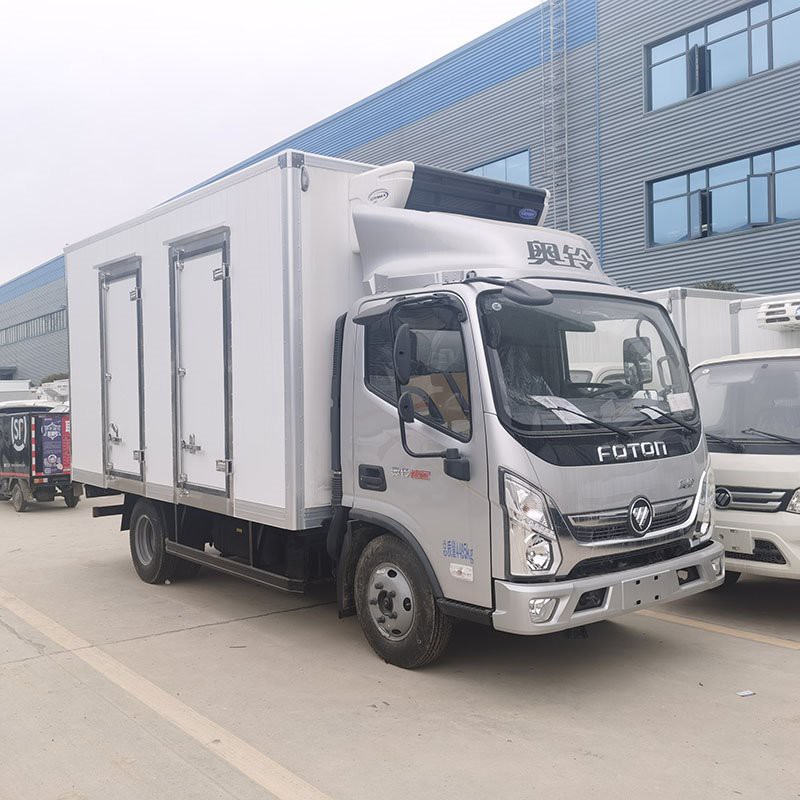In the world of waste management, the introduction of alternative fuel sources has been a game changer. CNG refuse trucks are at the forefront of this transformation, offering municipalities an eco-friendly solution for their refuse collection needs. This article delves deep into the various aspects of CNG refuse trucks, including their benefits, technology, cost implications, and real-world applications.
What are CNG Refuse Trucks?
CNG, or compressed natural gas, refuse trucks are specially designed vehicles that utilize compressed natural gas as fuel for waste collection and disposal. These vehicles are part of a growing trend toward greener technologies aimed at reducing the carbon footprint of waste management operations.
How CNG Works
Compressed natural gas is derived from fossil fuels, primarily methane, and is stored in high-pressure tanks. When used in refuse trucks, it undergoes combustion to power the vehicle’s engine, while producing significantly fewer harmful emissions compared to traditional diesel-powered trucks.
CNG vs. Diesel: Emission Comparison
| Emission Type | CNG Trucks | Diesel Trucks |
|---|---|---|
| CO2 | 20% less | Baseline |
| Nitrogen Oxides (NOx) | Lower | Higher |
| Particulate Matter | Almost none | Significant |
Benefits of CNG Refuse Trucks
Environmental Benefits
One of the primary advantages of CNG refuse trucks is their lower environmental impact. By using CNG, municipalities can significantly reduce greenhouse gas emissions, contributing to cleaner air and a healthier environment.
Economic Advantages
Although the initial investment for CNG refuse trucks may be higher than traditional diesel trucks, the long-term savings on fuel and maintenance can be substantial. CNG is often cheaper than diesel, leading to reduced operational costs over time.
Cost Breakdown of CNG Operations
| Expense Type | CNG | Diesel |
|---|---|---|
| Fuel Cost (per gallon equivalent) | $2.50 | $4.00 |
| Maintenance Costs | Lower | Higher |
| Federal Tax Credits | Available | Limited |
Operational Benefits
CNG refuse trucks also offer operational advantages, such as quieter operation. This is particularly advantageous for urban areas where noise pollution can be an issue.
Technical Aspects of CNG Refuse Trucks
CNG Engine Technology
The engines used in CNG refuse trucks are specifically engineered to handle the properties of compressed natural gas. These engines typically include modifications to ensure efficient combustion and performance under load.
Fuel Systems
CNG trucks are equipped with advanced fuel systems that include high-pressure tanks, fuel injectors, and electronic control modules to optimize performance.
Real-World Applications
Successful Case Studies
Several cities across the United States have successfully adopted CNG refuse trucks in their waste management fleets. For example, the city of Los Angeles has transitioned a significant portion of its refuse collection fleet to CNG, resulting in lower emissions and cost savings.
Operational Metrics
Measuring the success of CNG refuse trucks can be accomplished through various key performance indicators (KPIs) such as fuel efficiency, maintenance costs, and emissions reductions.
Challenges in Implementing CNG Refuse Trucks
Infrastructure Requirements
Implementing CNG refuse trucks requires a reliable refueling infrastructure. This may necessitate the construction of refueling stations, which can be costly and time-consuming.
Initial Investment
The upfront costs associated with purchasing CNG vehicles and setting up the required infrastructure can be a barrier for some municipalities, necessitating careful financial planning.
Tips for Transitioning to CNG Refuse Trucks
Assess Your Fleet Requirements
Before making the switch, assess the specific needs of your waste management operations. Consider factors like route distances, fuel availability, and total waste volume.
Explore Incentives and Grants
Many government programs offer financial incentives for the adoption of alternative fuel vehicles. Investigate available grants and rebates to offset costs.
Funding Sources
| Source | Description |
|---|---|
| EPA Transportation Grants | Funding aimed at reducing emissions from the transportation sector. |
| State-Level Incentives | Various states offer unique programs to support CNG adoption. |
Future Trends in CNG Refuse Trucks
Advancements in Technology
Continuous advancements in CNG technology are expected to enhance the efficiency and performance of refuse trucks. Innovations in engine technology, fuel systems, and emissions control are just around the corner.
Increased Adoption Rates
As more municipalities recognize the benefits of CNG refuse trucks, the adoption rates are expected to rise, potentially leading to wider availability of CNG infrastructure across the country.
FAQ Section
1. What are the main advantages of CNG refuse trucks?
The primary advantages include lower emissions, reduced fuel costs, and quieter operation. They also can offer substantial long-term savings in maintenance and fuel expenses.
2. Are there any drawbacks to using CNG refuse trucks?
Some drawbacks include the need for specialized infrastructure for refueling and the higher initial purchase cost compared to diesel trucks.
3. How does CNG compare to other alternative fuels?
CNG is often more readily available and cheaper than alternatives like propane or electric, but varies by region based on infrastructure and fuel availability.
4. Can existing refuse truck fleets be converted to CNG?
Yes, existing trucks can often be retrofitted to run on CNG, although it’s important to assess the cost-effectiveness of retrofitting versus purchasing new vehicles.
5. What measures can municipalities take to promote CNG usage?
Municipalities can provide education about CNG benefits, establish public-private partnerships for infrastructure development, and take advantage of federal and state incentives.
6. Is CNG safe for use in refuse trucks?
Yes, CNG is considered very safe. It is non-toxic, lighter than air, and has a much smaller risk of spills or leaks compared to other fuels.





